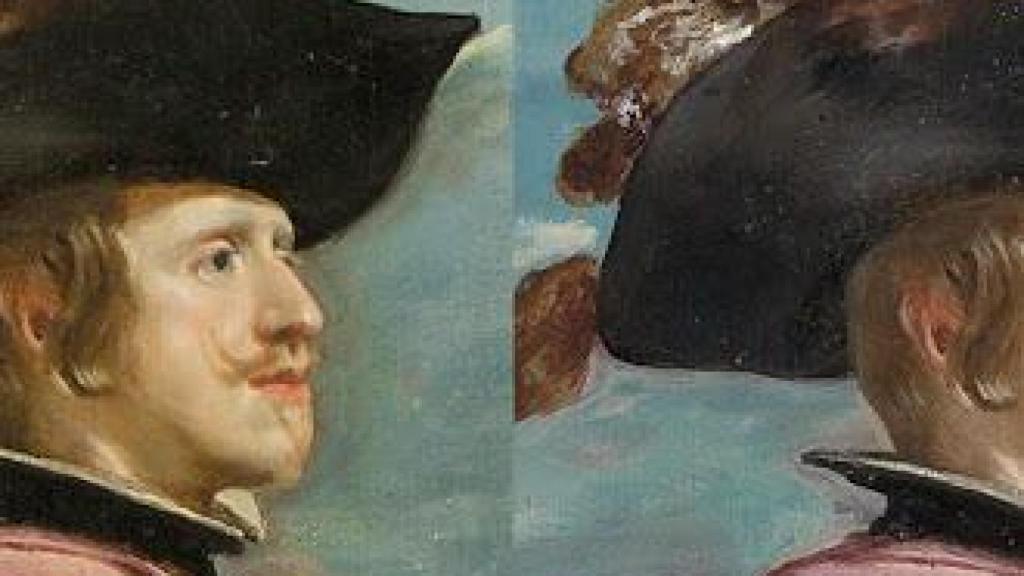This painting was part of the emblematic program of the Hall of Kingdoms of the Buen Retiro, conceived to stage dynastic continuity and political power through images of sovereigns and military victories.
Miguel Falomir, director of the museum, stressed that the restoration “allows us to verify the absolute mastery of Velázquez and his debt to Titian.” The work is already exhibited in room 12 of the Villanueva building, returning compositional clarity to the public and the pictorial pulse that time had obscured.
There he dialogued with the equestrian portraits of Isabel de Borbón – recently restored -, Prince Baltasar Carlos, Philip III and Margaret of Austria, in a visual device that combined the dramaturgy of the horse in motion with the speech of the triumphant monarchy.
Diego Velázquez (Seville, 1599-Madrid, 1660) builds here a serene profile of the king: Philip IV rides a steed in corvettedressed in armor, sash and flare, over an open landscape. There is no excessive theatricality: greatness is found in the economy of the gesture, in the light that cleans the silhouette against the horizon.
As the Prado documentation recalls, the canvas —only one of the series with “declaration of authorship,” reserving a blank space for the signature—looks squarely at the Venetian tradition and, in particular, the Charles V in Mühlberg by Titian, magnificent portraits that convey calm.
Diego Velázquez: ‘Felipe IV a caballo (después de la restauración)’ ,1635. Foto: Museo Nacional del Prado
Ese equilibrio entre contención y presencia aflora con nitidez tras la intervención, dirigida por María Álvarez Garcillán y realizada durante cuatro meses. El equipo ha abordado un problema histórico nada menor: las bandas laterales que el propio Velázquez añadió para ajustar el formato a la arquitectura del Salón de Reinos, cuya esquina inferior izquierda llegó a solaparse con una puertezuela de acceso.
En su día, ese fragmento se recortó y pegó a la puerta; posteriormente, ya en el Palacio Nuevo, un reentelado cosió de nuevo la pieza al lienzo. La restauración actual ha eliminado la sutura y los estuques que camuflaban la operación, fijando la película pictórica en zonas vulnerables para que la huella de esa historia material interfiera lo menos posible en la experiencia estética.

Detalle de Diego Velázquez: ‘Felipe IV a caballo’ (antes y después de la restauración), 1635. Foto: Ruben Vique
A la dimensión estructural se suma la cromática. La limpieza ha reducido el barniz oxidado que amarilleaba los colores y se han retirado repintes que ocultaban pasajes originales. El resultado, en palabras del propio Prado, es una obra “equilibrada, armónica y fiel al espíritu original”.
The reappearance of true color It not only illuminates the figure of the king; rearrange the space. The landscape gains depth and air; the horse, relief; armor, density of tempered metals. And, with this, the very idea of the equestrian portrait is reinstated: it is not a picture of bravery, but a government theory graffiti —a way of saying that power, to be legitimate, must be sustained in moderation and over time, not in the coup de effect.
La deuda con Tiziano es evidente: el sevillano absorbe la lección veneciana del tono y del paisaje como argumento, y la metaboliza en una modernidad sobria, casi silenciosa.
This project is part of a broader process of restoration and conditioning from the set of equestrian portraits from Velazquezpromoted by the Iberdrola Spain Foundation as a “protective member” of the Prado Restoration Program.
In February he was returned to the ward Queen Isabel de Borbón, on horsebackand now the monarch regains his place, consolidating the reading of the series and its symbolic architecture. The Foundation highlights that these interventions return the works to their “splendor,” allowing them to be seen today “as only Velázquez and his closest surroundings could see them.”
Diego Velázquez: ‘Felipe IV a caballo (antes de la restauración)’ ,1635. Foto: Museo Nacional del Prado
It is advisable to insist on the historiographical: the program of the Hall of Kingdoms it was not a collage of canvases, but a comprehensive iconographic system. The equestrian portraits occupied the walls, while the twelve battles and the Diez Labors of Hercules of Zurbarán articulated virtues and victories, under the shields of the 24 kingdoms of the Monarchy.
The restoration of Philip IV, on horseback partially corrects the distortions accumulated by displacements and adaptations, and restores the readability of the complex that Velázquez, Zurbarán and Maíno imagined for a space—the Buen Retiro—that was both theater of power as a painting laboratory.

